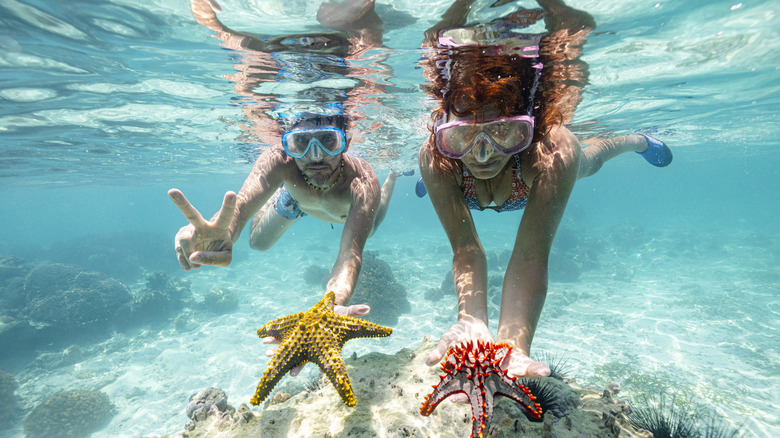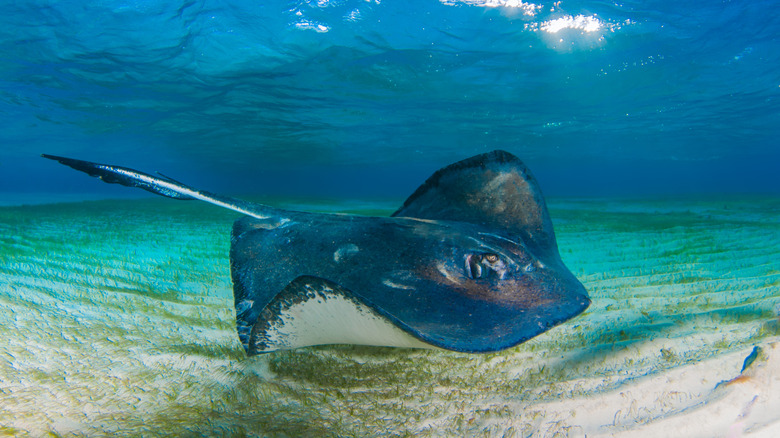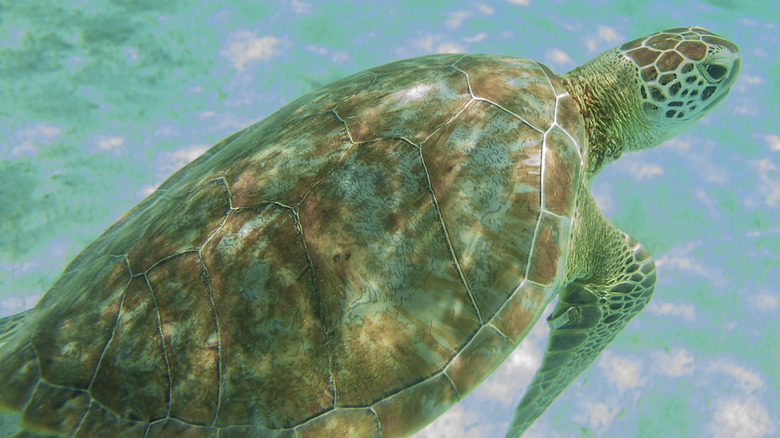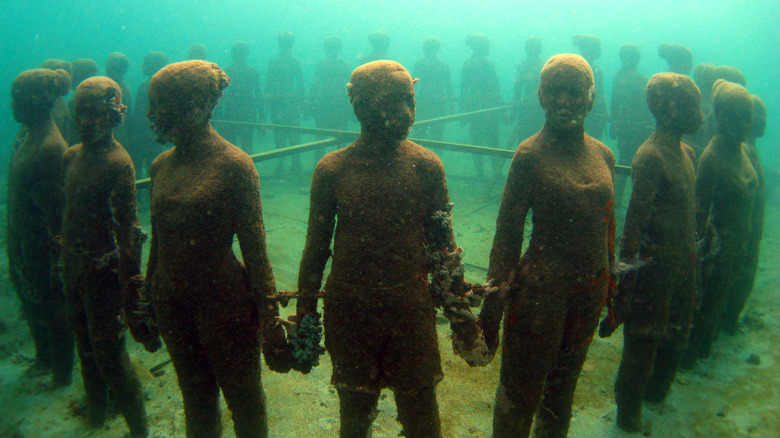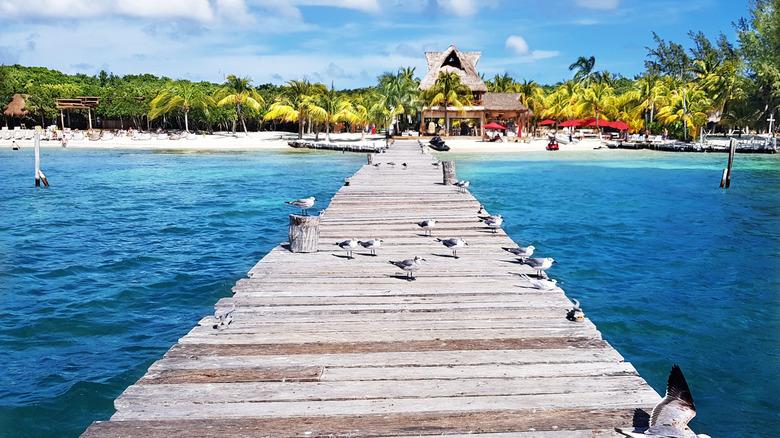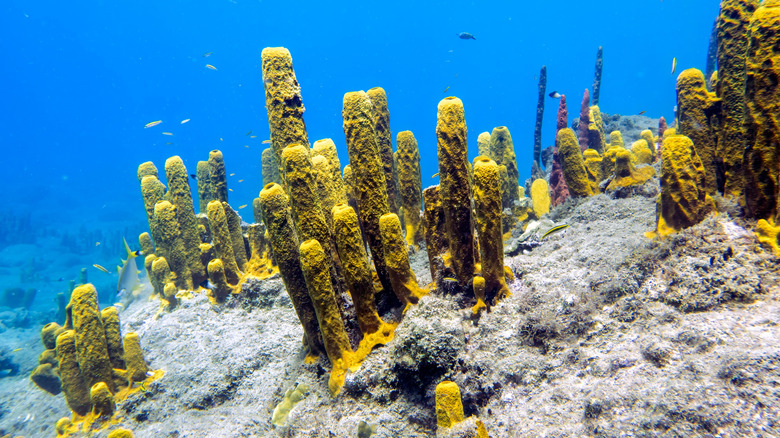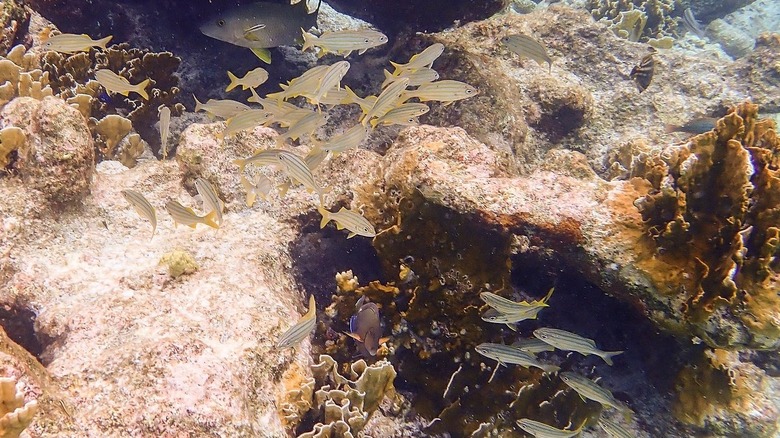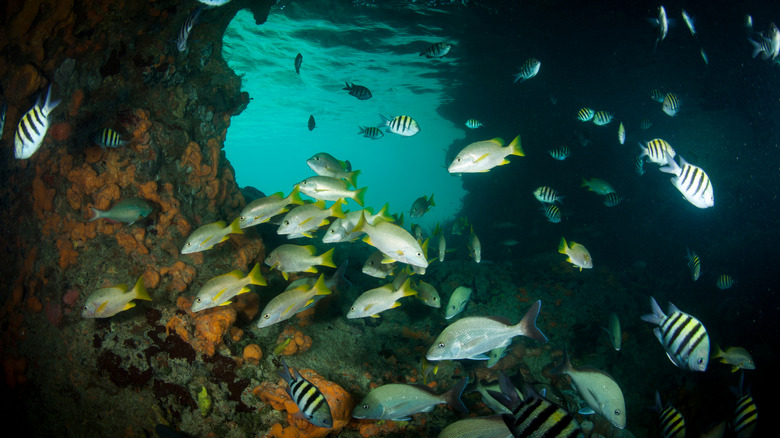Top 8 Snorkeling Spots In The Caribbean
Flanked by North, Central, and South America, the Caribbean Sea and its bevy of tropical islands are among the most accessible vacation spots in the world. The Caribbean also happens to be one of the best places to go snorkeling, too. Whether your vacation is in Jamaica, Mexico, USVI, the Bahamas, or any other destination, snorkeling in the Caribbean never leaves you disappointed.
Snorkeling at Stingray City offers an opportunity to enjoy the water and its hungry inhabitants in a relaxed environment. Feeling a little more adventurous? Take a quick hike and a short swim before eventually snorkeling in Waterlemon Cay. Dive a little closer to the bottom (say, 10 to 25 feet) to see the Molinere Underwater Sculpture Park off Grenada. Perhaps the best part about snorkeling in the Caribbean is that many of its beaches provide easy snorkeling access from the shore.
Whatever you're looking for in your next snorkeling trip, one of the Caribbean's many islands is sure to help make that desire a reality.
Stingray City – Grand Cayman
One of the best spots to visit in the Cayman Islands, this "city" is a shallow sandbar that's home to dozens of Atlantic Southern stingrays, who glide serenely around you in the shallow water, waiting to be fed. It's quite a hoot to have one of these 5-foot-wide rays casually flap by and gently suck a strip of fish from between your fingers. During winter's cruise-ship season, Stingray City can be packed with boats and people, but a summer visit is likely to deliver a somewhat more intimate experience.
Waterlemon Cay – St. John, U.S. Virgin Islands
First, brush up on your skills on the underwater snorkeling trail in Trunk Bay. Signs help you ID the species you're seeing, from elkhorn and brain corals to puffer and parrot fish. Then graduate to farther-off-the-beaten-path Waterlemon Cay, one of the best snorkeling spots in the U.S. Virgin Islands. Getting there is half the fun: Start on the shore in Leinster Bay and, carrying your snorkel gear, hike the short, flat, island's-edge trail to Waterlemon Beach. From there, it's a short swim in turquoise water out to the reef-surrounded cay — and a bonanza of turtles, rays, sea fans, and iridescent fish.
Tobago Cays Marine Park – The Grenadines
For great odds on spotting sea turtles, these five uninhabited cays surrounded by impossibly turquoise water are the place to go. The water off the beach at Baradel Cay, where boats are prohibited, is a favorite hangout of green turtles. When you tire of watching them munch the sea grass just a few feet below you, head over to Horseshoe Reef, which fringes open ocean. Keep an eye open for spotted eagle rays winging by while you check out the endless variety of coral, sea fans, sea whips, and reef fish.
Underwater Sculpture Park – Grenada
Underwater sightings here include a newspaper correspondent working at his typewriter; a man cycling on a salvaged bike; a circle of local kids, holding hands; and a still life of a vase and fruit on a table. And fish, of course, because this sculpture gallery 10 to 25 feet down was designed to create artificial reefs that would attract marine life. The sculptures themselves change with the wave action — a figure resting on the bottom may suddenly wear a blanket of sand — and have been colonized by corals and sponges, giving them wild and wonderful punk hairdos and makeup jobs.
Isla Mujeres, Mexico
This is one of just a handful of places where you can swim alongside whale sharks, the world's largest fish: as long as a school bus, with a 5-foot-wide mouth. (Don't worry: They're docile, and feed only on plankton and algae.) It's only possible between June and August, when these sharks migrate around the tip of the Yucatan Peninsula. Normally solitary, they socialize here in groups of 20 or more, and have even been known to get playful with snorkelers.
Champagne Beach – Dominica
The rocky beach gives little hint of the underwater surprise you'll find a short swim offshore. Streams of bubbles rise from the ocean floor, released from volcanic steam vents. Snorkeling here is like swimming through a fish-filled glass of Moët & Chandon. If you can take your eyes off the mesmerizing bubbles, search for seahorses hiding in the vibrant sponges and dive down to touch the hot sand, warmed from the geothermal activity below the surface.
Klein Bonaire – Bonaire
Bonaire isn't just for divers. The shallow reefs surrounding Klein Bonaire, a ½ mile off the main island, are bedecked with colorful tube sponges and fire and orange cup corals, and teem with tropical fish just 3 to 10 feet below the surface. These protected waters are also turtle nesting grounds, so you're likely to spot hawksbills and loggerheads, which can weigh more than 400 pounds. And no worries about a tropical storm coming between you and a good time: Bonaire is safely outside the hurricane belt.
Thunderball Grotto – Exuma Cays, Bahamas
Swim through a small, almost hidden entrance in the rock wall at ebb tide, and — whoa — you're in an underwater cave system. In some spots, the ceiling is low; in others, it soars high above your head, broken with holes that allow beams of sunlight to pierce the water and illuminate the brilliantly colored schools of fish. The stunning grotto is a Hollywood go-to: Two James Bond films were shot here, including "Thunderball," which is how the place got its name.
